Many of us spent formative years reading in libraries. Certainly, I used to hang out in the local library after school, reading all kinds of things. It was a haven of learning, and an escape for a quiet child who loved reading — and still does!
Most independent authors want to support libraries by making our books available in multiple formats for library patrons to borrow, but how can you do that when they seem so hard to reach? Eric Otis Simmons shares his updated tips and resources in this article.
If you haven’t considered libraries as a market for your self-published book(s), you should.
Why? For one, there are 2.6 million libraries globally1, and they spend roughly $31 billion annually2! In the U.S., library expenditures are $14.2 billion a year2, and of this amount, $1.4 billion1 or 10.2% is spent on books!
Secondarily, the library market is growing! Two years after Joanna posted my original article, How To Get Your Book Into Libraries, the number of Academic Libraries worldwide grew to 95,3611, a 111.8% increase, and Public Libraries globally grew to 406,8341, a 39.4% increase! In the U.S., the number of Academic Libraries had grown 12.5%, and there were 90.5% more Public Libraries!
And third, libraries are purchasing more eBooks. According to the American Library Association (ALA), in 2020, OverDrive (a provider of eBooks to Libraries) loaned out more than 289 million eBooks worldwide, a 40 percent increase from 2019, a shift the company attributed to the global pandemic.
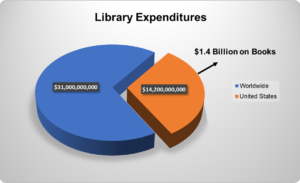
If you wonder if libraries buy self-published books, the answer is, “Yes, they do.”
In its April 5, 2021 article, How Library Distribution Works for Indie Authors, the Alliance for Independent Authors (ALLI) shared the results of a 2016 survey conducted by US-based publishing service New Shelves. Per the survey, “… 92 percent of librarians reported that they regularly purchase from self-published authors and small presses.”
Although there still may be some libraries whose Collection Development Policy (the guidelines libraries use when making book purchasing decisions) might state they don’t buy self-published books, those excluding are becoming rarer and rarer.
I believe my situation is a good example. As of this writing, 156 libraries worldwide have acquired 192 copies of my self-published titles since I first introduced them to librarians a few years ago.
Also, in the last two years, I haven’t had one library inform me they don’t buy self-published books. And if you’ve heard that it’s hard getting a self-published book into a library, I would say, “It shouldn’t be easy because of the vital role libraries play in societies, but I and others are proof that it can be done.”
As long as you bring to the table a well-written high-quality piece of work that generates Library Patron interest, the opportunity exists.
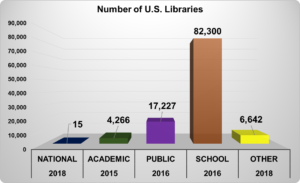
Methodology
I often get asked, “How are you getting your self-published books into libraries?” As I shared in the article mentioned above and in my book Getting Your Book Into Libraries, I’ve learned the best way to inform libraries about my titles is via email correspondence.
Initially, I tried calling, but invariably I was asked to send information about my book(s). So, after some trial and error, I developed an email structure intended to provide the type of information a librarian typically seeks or needs when deciding to add a book to their library’s collection.
So, when corresponding to libraries, you want to answer the Who, What, When, Where, Why, and How.
You want to make them aware of:
- who you are
- what your book is about,
- why you believe their Patrons will be interested in it,
- where your book fits genre-wise,
- where they can purchase it, and;
- how it is doing with other libraries or in the retail marketplace.
You might also include when the book was released.
If you have book reviews, you’ll want to be sure they are from sources librarians might use. Per ALA, these could include Kirkus, Library Journal, New York Times, Publisher’s Weekly, and School Library Journal, to name some. In my experience, it’s unlikely you’ll get much traction, if any, from Amazon, Goodreads, or similar reviews. If you have library references, however, do include them. I’ve found them to be immensely beneficial.
(Note: For those that may be new to self-publishing and are interested in marketing their book(s) to libraries, I believe you’ll find my latest book, Self Publisher’s Toolkit, beneficial because it contains information on both topics.)
How Libraries Acquire
Before you begin contacting libraries, you want to make sure your book is available through the purchasing channels they use. Per ALLI, “Libraries don’t buy directly from publishers or authors, but from distributors.”
It’s not uncommon for distributors to work through wholesalers in the Library market. For instance, Blurb, and Bookbaby, which I’m currently not using, can make your books available to libraries through Ingram Content Group (i.e., Ingram Spark), the world’s largest wholesale book distributor and regarded as the leading source from which libraries purchase books.
So, for your paperback book(s), you want to be sure to use Ingram. Approximately 80% of my Public and Academic Library sales have come through them.
To self-publish your book(s) with Ingram, you will need to use their IngramSpark self-publishing tool. The cost was $49, at this writing, for both a print and eBook. Also, I highly recommend you use their wholesale discount of 55% off the retail price for your book because this pricing level is commonplace in the library sector.
[Note from Joanna: If you're a member of the Alliance of Independent Authors or another professional organization, you can get discount codes for Ingram Spark. If you have more than one book to publish, it can be worth joining for the discount code alone, let alone all the other benefits!]
To achieve a comparable royalty for your book(s) similar to what you might receive with Amazon, for example, you may want to increase the price of your book on Ingram to slightly higher than what you are selling it/them for at retail. I’ve found “uplifting” my pricing a little bit has not been an issue, as long as it’s reasonable.
Other paperback distributors available to you include Amazon, which distributes to libraries via its Expanded Distribution offering. While you might get some library sales through Amazon, don’t set your expectations too high. Only 10% of my library customers have purchased via Expanded Distribution.
Baker & Taylor (B&T), another library distributor, does not have a self-publishing platform, so you would have to use someone like Bookbaby to make your book(s) available to libraries who might purchase from B&T.
For your eBooks, you want to be sure to use distributors that can make your book(s) available through OverDrive. With a network of 65,000 libraries and schools in 84 countries, OverDrive states they are the leading digital reading platform for libraries and schools worldwide.
Distributors that I’ve used to make my eBooks available to libraries through OverDrive include Draft2Digital (D2D), Smashwords, StreetLib, and PublishDrive. One or more of these companies can also make your book(s) available through Bibliotheca and B&T (Axis 360), from whom I’ve seen libraries purchase eBooks. These four companies’ self-publishing platforms are free.
Hoopla, an alternative to OverDrive, is another company you will want to use. Out of the distributors I’m currently using, Hoopla is available from D2D, PublishDrive, and Ingram. Hoopla utilizes a Cost Per Checkout (CPC) model, which allows you to get paid roughly 1/10 of the retail price of your eBook each time a library loans it out. Lately, I’ve seen Hoopla-related Library sales almost monthly.
[Note from Joanna: You can also reach libraries with your audiobooks if you publish wide through FindawayVoices.com, which has a cost-per-checkout model so it's affordable. Personally, I use Draft2Digital for ebooks, Ingram Spark for print, and Findaway Voices for audio to make my books available in all formats to libraries.]

Finally, if you have scholarly works, I understand EBSCO, a provider of research databases, e-journals, magazine subscriptions, eBooks, and discovery services to libraries, is a good resource as well. I plan to investigate them further this year for my memoir, which I believe would be a good fit for Academic Libraries’ Social Sciences department.
Email Correspondence
The components of your email correspondence to libraries should include:
- A solid introductory paragraph to cause the reader to want to learn more about your book.
- Information promoting your title.
- Your book cover and associated ISBN.
- A synopsis of your book and its genre.
- The distributors through which your book is available.
- A “soft” ask for the business.
If the first five above look familiar, they should because it’s your book’s metadata. The key is to construct the information in the form of a “Sell Sheet,” as I call it. Also, if you have book reviews, received an award(s) for your book, have library references, or have made numerous appearances on Amazon’s “Best Sellers” list, you should include that information.
Your thought process in constructing your email letter should be, “I have one opportunity to impress, so I need to include information that will cause the reader to want to say, Yes!”
After you’ve built your letter for emailing, spend time thinking about your email subject line. You want to strive for a message that will cause the recipient to open your email to learn more.
Library Contacts “Database”
Next, you will need a list of libraries and the emails of their key decision-makers. I searched Google for this article and found two companies offering lists.
One was for 3,108 Public and Academic Libraries for $185 each. You get mailing labels and a data file containing the addresses of the Libraries, so this is not an electronic solution.
The other offered a list of 272,219 U.S. Public and Private Library contacts for $27. I downloaded their sample list, which was underneath a picture of the inside of a Library, and the list contained accounting companies and not Libraries. So, I’m not sure what you might get.
I use a Library Contacts “Database,” a Microsoft Excel spreadsheet I created that has been very popular with self-publishers. It contains the names and email addresses of 3,000 to 6,000 librarians who were the highest level decision-makers I could find on their libraries’ websites. Available for Windows and Mac users, the “Database” also has the Libraries’ URLs (Windows version) for faster updating of the librarians’ information if needed, the states the libraries are located in, their consortium affiliation, if any, and other pertinent information. In addition, the “Database” comes with “Getting Your Book Into Libraries” in Kindle and ePub format and a sample Library “Intro Letter” that I have successfully used.
Mail Merge
Various Mail Merge tools are available to help you contact a group of Libraries via email at one time. I use Microsoft Word’s Mail Merge feature and Outlook to correspond to libraries. To keep my emails from looking like spam messages, I insert fields from the Library Contacts “Database” directly into various areas within the body of my correspondence to give the document a “customized” look.
Additionally, to keep from inundating librarians, I use portions of the “Database” at a time to do monthly or quarterly email “Campaigns.” This ongoing contact approach allows me to keep my titles in front of libraries consistently.
Steps for Marketing Your Book to Libraries
- Determine your objective for your email campaign.
- Is it to introduce your book?
- Is it to promote a new book that you just released?
- Are you offering a discount for a limited time to boost your sales?
- Are you trying to capture business during Libraries’ Fiscal Year End(FYE)/Fiscal Year Begin (FYB)?
- Decide how you want to utilize your Library Contacts “Database.” For example, you may want to contact all Libraries in a consortium. Or you might want to target a particular state(s).
- Be sure to include your book cover, ISBN, book synopsis, and the distributors through which your book(s) is available.
- Ask, respectfully, that your book be considered for addition to their collection (i.e., the soft “ask for the business” I mentioned earlier).
- Thank the librarian for their time and let them know you look forward to the prospect of your book being added to their collection. I call this a soft “assumptive close.”
- Initiate your email campaign.
I would encourage you to be creative when marketing your book to libraries. For example, when the pandemic was at its peak in 2020, I emailed librarians to make them aware I could help them continue to offer programming (i.e., events) for their Patrons via Zoom video conferencing. Subsequently, I had a library invite me to do a book reading of my memoir, and several others asked me to do “How to Self-Publish” seminars.
The last bit of advice I would offer is not to give up on your efforts to get your book(s) into libraries. On average, my current library customers received 3.8 emails from me before they purchased. So, while I’ve had over twenty libraries purchase after receiving one email, I’ve had five libraries that I emailed 10-12 times, over two years, before they made a purchase. So, persistence pays.
In summary, the library market is a viable sector for self-publishers and one worth pursuing. In addition to the prestige that comes with getting your book(s) into a library(s), you also have an opportunity for multiple sales with their branch locations. Also, follow-on sales could occur because data has shown that 42-70%3 of baby boomers and millennials who checked out a book from a library tend to buy the book.
I’m excited about the opportunity that libraries present, and I sincerely hope you will find them to be a “diamond in the rough!” Here’s wishing you much success in getting your book(s) into libraries, and thank you for your time and interest today.
Endnotes
- Source: Institute of Museum and Library Services (IMLS)
- Source: Online Computer Library Center (OCLC)
- Source: Library Journal Generational Reading Survey 2019

Eric Otis Simmons is the owner of ESE, Inc., a website development firm specializing in creating sites for small businesses, authors, poets, and others seeking to present their personal brand on the Internet.
A former college athlete, Eric enjoys sports and public speaking. He started self-publishing in 2017, and libraries worldwide have purchased his self-published titles.
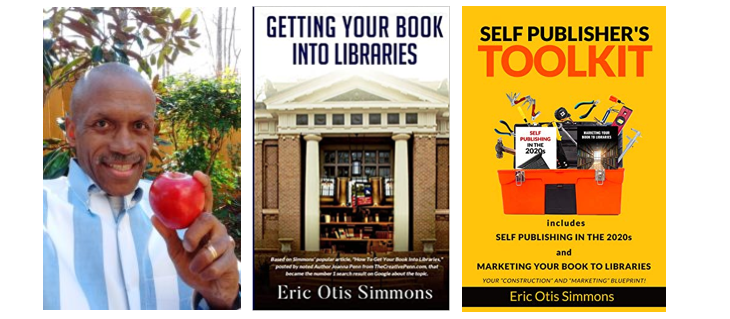
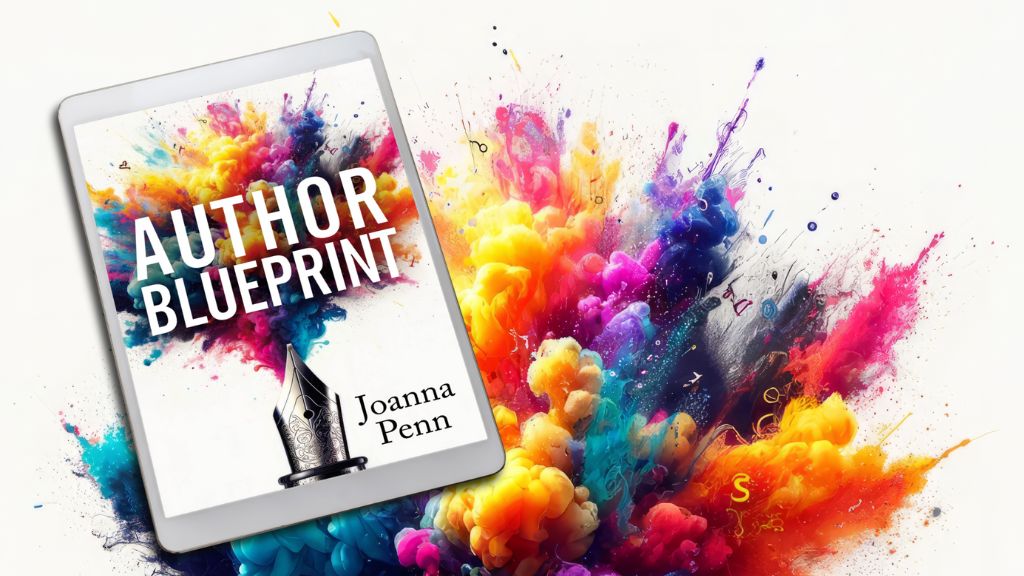
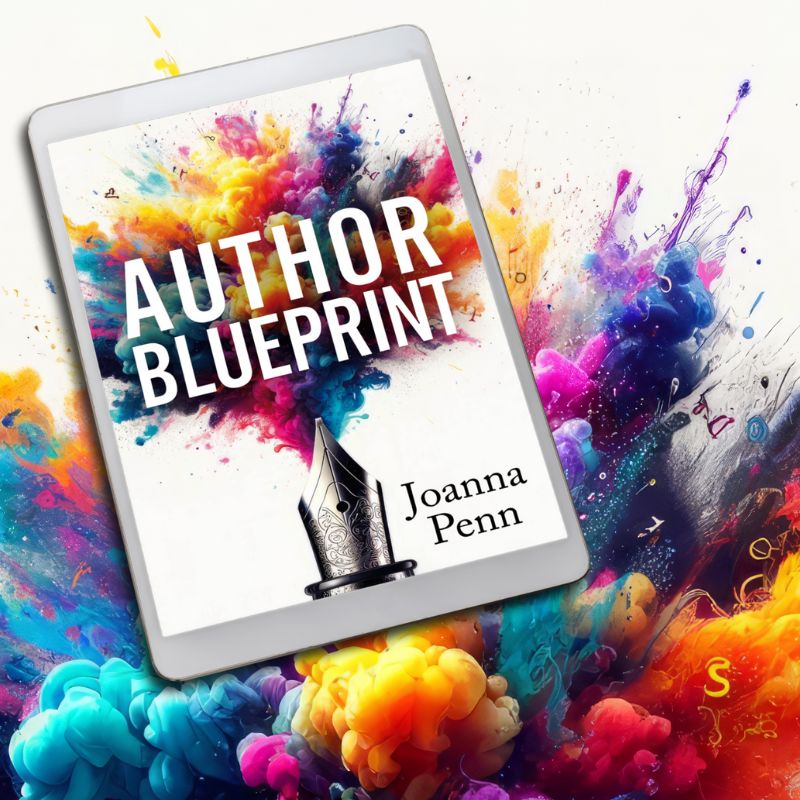
Thanks for the great tips, Eric (and Joanna).
I managed to get my first novel, The Purple Bike, into 4 Australian libraries and 1 UK library (only 2,599,995 to go!) but now I will follow up and persevere.
Great start!
Tamsin,
That’s outstanding! Congratulations!
Eric
Hi Joanna,
What an amazing share! I am working on my book, and I plan on self-publishing it once it is completed. All your tips will really be helpful to get my books into libraries. I really was not considering the library a good market, but after reading this article, I will definitely use this process to get my book in libraries. It was such a helpful read, and I have bookmarked it for later. I will be revisiting it once my book is finished.
Thank you, John, and here’s wishing you the best of luck with your new book and your Library marketing efforts!
Eric
Hi Joanna and Eric,
What email platform are you using: MailerLite, Mailchimp? I have my letter written and edited, but sending multiple email letters seems to violate anti-spam requirements.
Great article! Thank you. Do paperbacks have to have a spine with text on it to get into libraries?
If it’s wide enough for text, yes. There are some very short stories etc that are too thin to be printed with text on the spine, but in a library, they will just disappear. So I’d suggest that most books would have a visible spine for a shelf.
Since the libraries are buying from Ingram, and Ingram does not disclose who they sell the books to, how do you know when they have purchased your book?